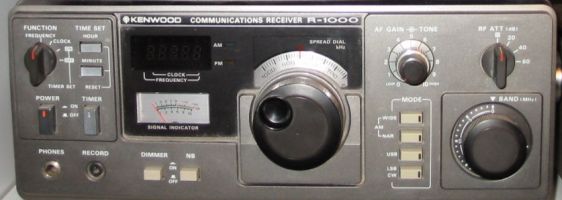Low frequency operation
A growing number of amateurs are becoming interested in operation at low frequencies, one band well below the AM broadcast band and another at 500 kHz, just below the AM broadcast band.
Low frequencies offer many challenges to the radio experimenter, particularly those with limited room for antennas. Full-size antennas are hundreds of metres long. Noise is always a problem with reception, particularly in urban areas. The available bandwidth at low frequencies is small, so there is much scope for experimentation with narrow band digital modes, receiving techniques and antennas.
136 kHz band
In 2009, Australian amateurs were granted access to a new allocation at 136 kHz. This new Spectrum Plan has an LF allocation of 135.7kHz - 137.8kHz for VK Amateurs as Secondary users.
The band is only 2.1 kHz wide, technically sufficient for one single sideband voice transmission, but for a number of reasons the modes that can practically be used are those requiring much less bandwidth than 2.1 kHz. Modes typically used include plain CW/morse, a very slow version of morse (QRSS) that requires computer control and sequencing, and other modes such as those using very small frequency shifts and a modified version of morse that can be decoded on screen.
The main problem for amateurs transmitting on this band is the inefficiency of their antenna systems. An antenna for this band in a typical suburban backyard is far less efficient than an antenna for HF or higher bands. The power allowed on this band is specified in terms of effective radiated power rather than the power produced by the transmitter. Typically amateurs are using 100 to 200 watts of transmitter power and loaded vertical antennas, delivering an effective radiated power of less than the 1 watt permitted.
Despite this problem, in 2010 contacts have been made within Australia and between Australia and New Zealand. The modes used were modified morse sent very slowly by computer and displayed on computer screens.
Dale VK1DSH and Dimitris VK1SV have been experimenting with this band in 2010. Dale has had a successful contact with John VK3ACA in Melbourne. Both were using loaded vertical antennas for transmitting and Dale used a loop for receiving. Some details of Dale's station were included in a presentation he gave at the Gippstech conference at Churchill, Victoria, in July 2010.
This WIA news link provides more information.
NOTE: All advanced class licencees have permission to use this band.
Experimenters co-ordinate tests on-air or via a mailing list. A very comprehensive website on Australian low frequency activity is maintained by VK2ZTO/VK2XV.
472-479 kHz band
Access to this band for all advanced licencees was granted by the ACMA commencing 1st January 2013. Maximum power output is 5w Px EIRP with maximum emission bandwidth of 2.1 khz. Note that EIRP means effective isotropic radiated power, so the efficiency of the antenna is taken into account. A 100watt transmitter with an antenna efficiency of 1% would have an ERP of 1 watt, and antenna radiation characteristics would modify that figure to produce an EIRP figure for the station.
Next: HF Digital modes

